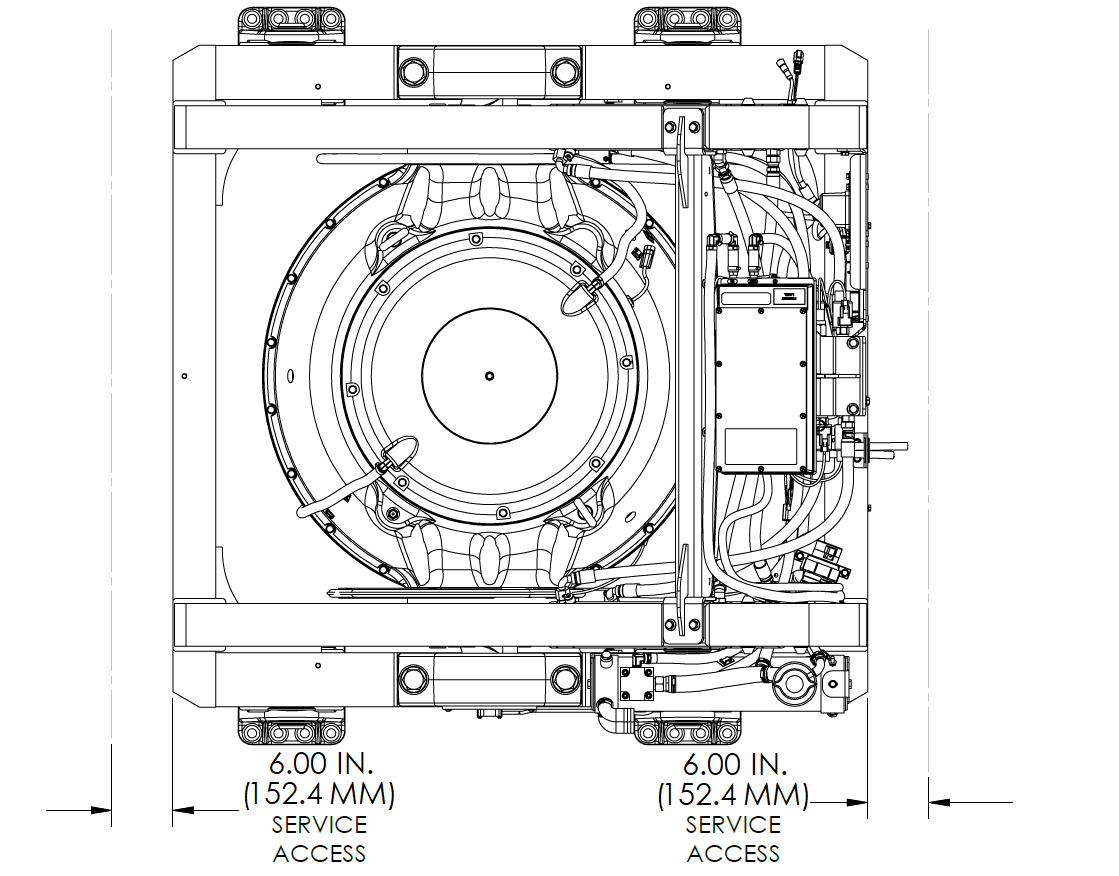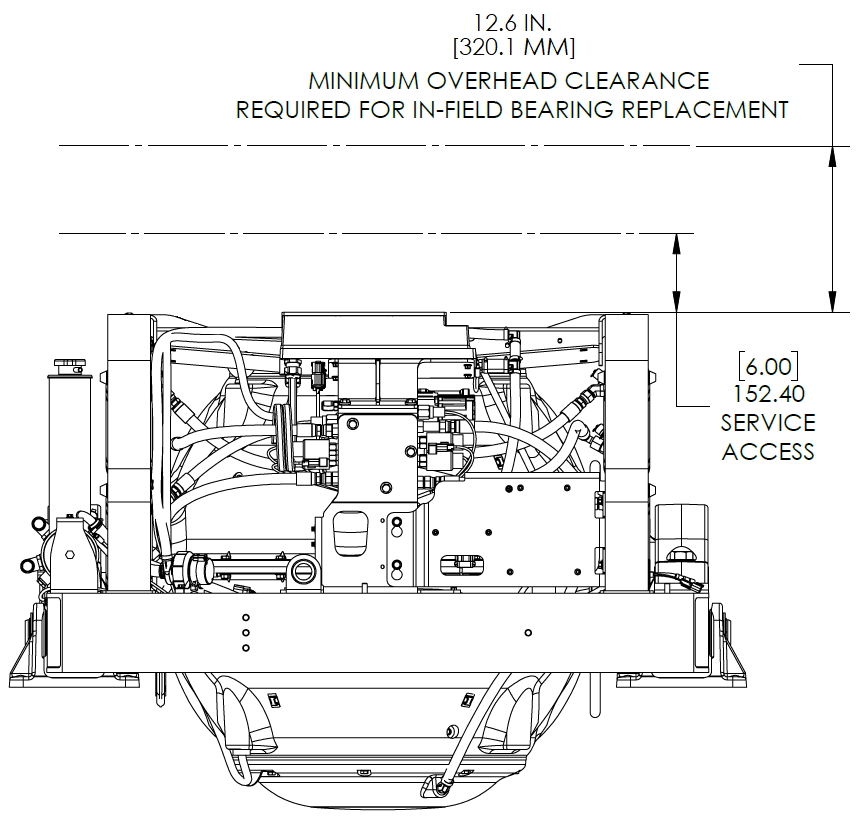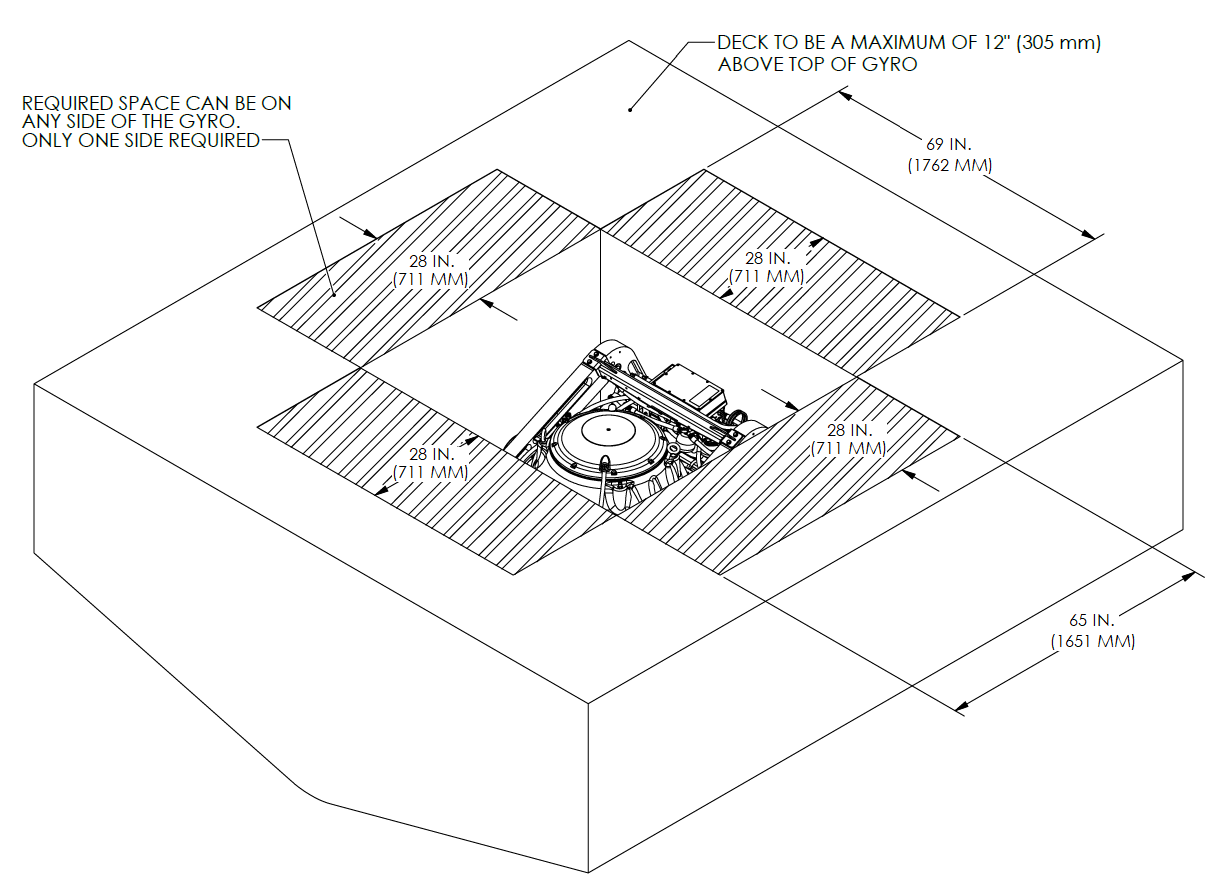Seakeeper 40 Installation Manual (90715-2) 40-234-0043 to Current
2.2 Selection of Installation Location
Selection of mounting location of the Seakeeper should consider the following desirable features:

The Seakeeper should be installed aft of amidships to minimize high acceleration loadings due to hull/wave impacts during operation at high speed or in large waves. If the only possible installation location is forward of amidships, then the installer should have Seakeeper review the installation location prior to finalizing the design.
Seakeeper can only assess installation location regarding its impact on Seakeeper operation and serviceability. Seakeeper cannot determine how the installation location will affect the vessel static or directional stability other than cyclic roll reduction. The Installer is responsible for considering the Seakeeper’s effect on the CG location, trim, overall stability, and performance of the vessel.
The Installer is solely responsible for ensuring that the Seakeeper is properly located and installed on the vessel foundation with an adequate margin of safety for the specified design loads and vessel operating characteristics.
Selection of mounting of the Seakeeper should consider the following desirable features:
- Overhead access or sufficient clearance for removal / re-installation of the Seakeeper for overhaul in future years per Figure 3.
- The Seakeeper should be installed in a dry space to minimize effects of corrosion.
- Clearance for replacement of gimbal angle sensor on gimbal shaft (see Figure 3).
- Clearance for filling / purging brake hydraulic oil (see Figure 3).
- Clearance for filling water/glycol cooling circuit (see Figure 3).
- Clearance for replacement of brake hydraulic cylinders (see Figure 3).



VIEWS SHOWING RECOMMENDED CLEARANCES AROUND THE SEAKEEPER FOR USE OF HANDTOOLS, EASE OF MAINTENANCE, INSTALLATION, AND PROPER OPERATION.
Figure 3 – Seakeeper 40 Installed Clearance Considerations
6 in. (152 mm) on each side with one side having 28 in. (711 mm)
12.6 in. (320 mm) overhead service clearance
2.2.1 Noise/Soundproofing
Seakeeper noise has been measured under steady state conditions (no wave load) in Seakeeper‘s Engineering Lab. The steady state noise is typically < 73 dBC at 1 meter. As the frequencies emitting the highest sound pressures are low (like other marine machinery), it is recommended that the Seakeeper be installed in a machinery space that is already treated with soundproofing.